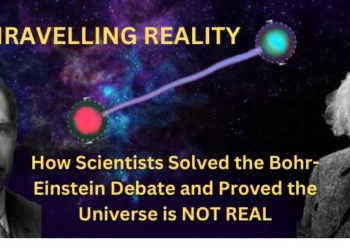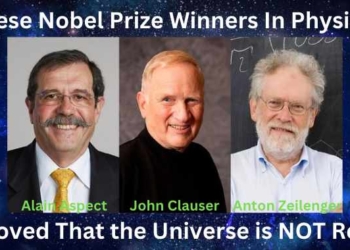
It's almost impossible for the human mind to imagine the incredible forces involved in a supernova. They're so colossal that they would make the largest atomic bomb that's ever exploded on Earth seem like a party popper. They'd make the biggest volcanic eruption ever seen look like popping candy. When stars expand, collapse, or implode, each event is monumental. In extreme cases, such events can warp the space-time continuum. The death of a star is a reminder of the impermanence of everything and also the fact that we live in a tiny corner of an enormous universe.
We're all fascinated with stars to a greater or lesser degree. We looked up at them at night and wished upon them as children. Our ancient ancestors imagined shapes in them, creating constellations and building legends around them. We've used them to navigate the oceans and track the passing of time. Even today, some people trust their fate to them via the medium of astrology. They've also become playthings in online slots games like “Starburst.” For all the entertainment value of that online slots game and all the complex mathematics that goes into its running, it's nothing compared to a real supernova. You could add all the mathematical functions of every online slots game at Rose Slots CA together, and you still wouldn't get close to being able to accurately model a supernova. They're difficult things to study because they happen so rarely and so far away.
The rarity of supernovae is what makes them so difficult to study. Even our most powerful telescopes can't see past the dense cluster of stars at the centre of the Milky Way, obscuring our view of our native galaxy. It's thought that there's an average of around four supernovae per century in the Milky Way, but none of them have ever been directly observed from Earth because we can't predict them and don't know where to look. The closest and most detailed look that scientists on Earth have ever got at a supernova happened in 2016 when a star died in a small galaxy more than 4.6 billion light years from our own. The explosion was unusually bright – around five hundred times brighter than the average supernova – so the star must have been colossal. That's about all scientists could discern about it from such a distance other than the fact that a massive release of hydrogen probably meant it was two stars that had merged to form a white dwarf before collapsing.
Because of the comparative lack of information available about supernovae, scientists have until now divided them into just two different categories. That all changed at the beginning of July 2021. Through a combination of luck and observation, astronomers were able to capture a supernova in progress a mere 31 million light years away. It exhibited characteristics that experts have never seen in a supernova before, leading it to be classified as a third, never-before-seen type of supernova. In the process, they believe they might have solved a one-thousand-year-old mystery.
Before this new observation, supernovas were divided into “core-collapse supernovae” and “thermonuclear supernovae.” A core-collapse supernova happens when a large star – at least eight times more massive than our own Sun – runs out of fuel to burn and collapses in on itself, becoming either a super-dense neutron star or even a black hole in the process. Thermonuclear supernovae happen when white dwarf stars explode outward, sometimes creating nebulae or enormous gas clouds in the process. A third type of supernova – a so-called “electron-capture supernova” – was theorised by Japanese scientist Ken'ichi Nomoto during the 1980s but remained strictly theoretical until this week. We now know that Ken'ichi's theory was correct.
In Nomoto's model, a large star that runs out of fuel and begins to collapse might eventually force electrons into the atomic nuclei of its core through sheer gravity, resulting in the star losing most of its mass before exploding. Such a supernova should be far less radioactive than a regular thermonuclear supernova and should leave behind a neutron-rich core. The recently detected supernova, named “Supernova 2018zd” after the year in which the star began to be monitored, shows signs of all these processes. It lost a lot of its mass before it went supernova, its chemical composition is highly unusual, the explosion was comparatively weak, there's little sign of radiation, and the core appears to be rich in neutrons. Happily, Nomoto is still alive and has had the opportunity to review the data first-hand. He's delighted to finally be proven correct.
Perhaps encouraged by the discovery of this new type of supernova (which might be named the Nomoto Supernova in his honour), Nomoto has now suggested that the great supernova of 1054 might have been a stellar event of this kind. Historical accounts tell us that in the year 1054, a bright light appeared in the sky and remained visible in the daytime for 23 days. The people of the time didn't know what it was, but we now recognise it as the supernova that created the Crab Nebula. It's long been suspected that the Crab Nebula was created by a supernova, but Nomoto now believes it to be the product of an electron-capture supernova. The detection of a neutron star or even a neutron-rich core within the heart of the nebula might confirm his theory – and that's the project he's now working on.
Stars can live for billions of years. Our own native star will still be spinning in the sky long after everybody reading this article has turned to dust. We’re all footprints in the sand as far as the stars are concerned. They existed long before life emerged on Earth, and they’ll still be spinning in the sky long after the Earth has been destroyed by the expansion of the sun. Even after thousands of years of gazing up at them in wonder, our understanding of them leaves much to be desired. Understanding how they die, though, might hold the key to understanding how they’re born. Thanks to Nomoto and the people who monitored Supernova 2018zd, we know more today than we did yesterday. Progress is slow, but it’s happening.














